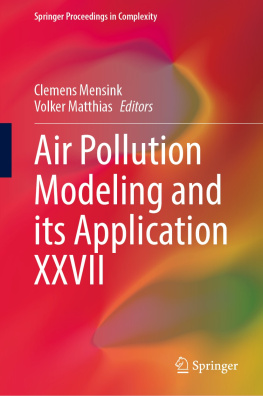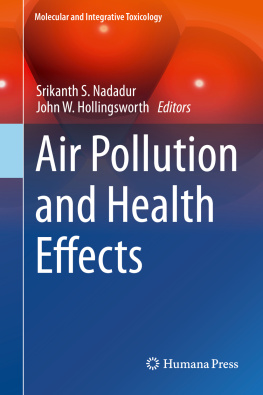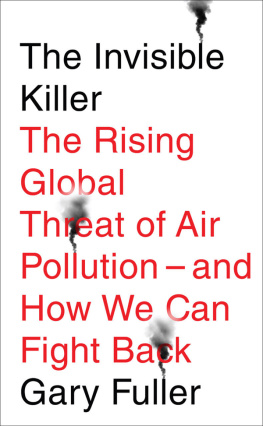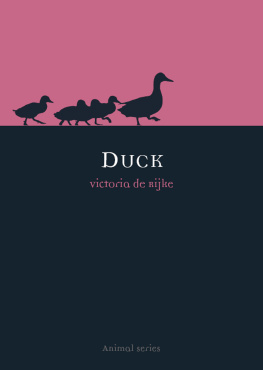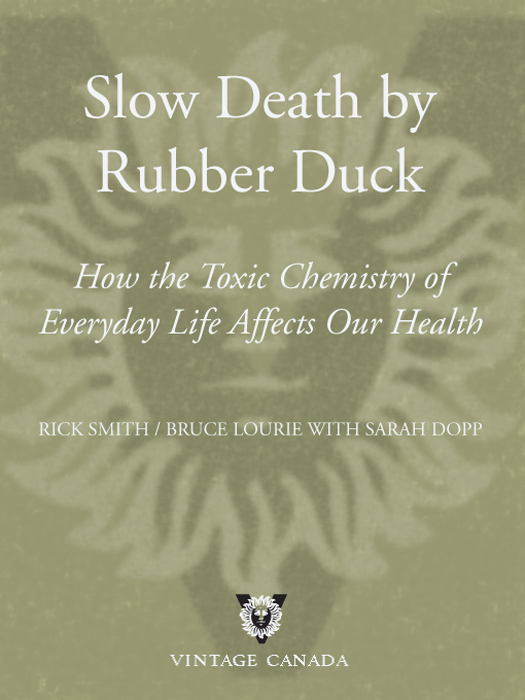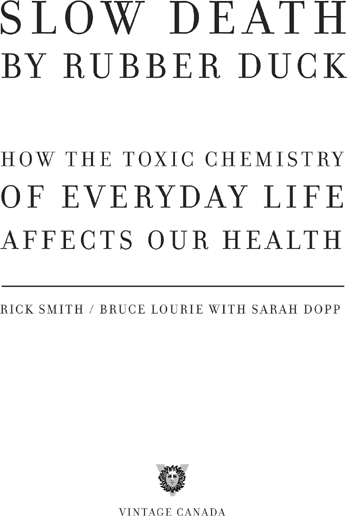Praise for
SLOW DEATH BY RUBBER DUCK:
HOW THE TOXIC CHEMISTRY OF EVERYDAY LIFE AFFECTS OUR HEALTH
NATIONAL BESTSELLER
A Quill & Quire Book of the Year
A powerful reminder that what we do to Mother Earth, we do directly to ourselves. Read it to see why we have to change the way we live and get off our destructive path. David Suzuki
A fascinating and frightening read. Slow Death by Rubber Duck is an important and timely antidote. The Globe and Mail
Using narrative, humour and real-life scenarios, Slow Death by Rubber Duck has restored my faith in the environmental movements ability to make compelling points about toxins in our world, without beating us to death with a wagging finger. rabble.ca
Indispensable and unputdownable, Smith and Lourie take ourand theirtoxic temperature. As scary as it all is, the really surprising part is how easily we can start cleaning up our act. Ann- Marie MacDonald, author of The Way the Crow Flies and Fall On Your Knees
The latest green lit bible. Toronto Life
Fascinating read! Alarming, engrossing and just plain loony at times, their experiments drive home just how mundanely day-to-day our mass chemical poisoning has become. Adria Vasil, author of Ecoholic
Shows how easy it can be to detoxify. Smith and Lourie explore how much we are exposed and provide attainable solutions to protecting ourselves. Zoomer magazine
A call to action for both governments and all Canadian citizens, but especially for us mothers, who are necessary for real social change. Sophie Grgoire- Trudeau
Slow Death gives a passionate survey of the argument. I read it and threw out my Teflon frying pans. The Lawyers Weekly
What really stands out is the solid writing. Though chock full of Canadian and international statistics, the book never sounds preachy or dense. Considering how undeniably depressing their findings are, the authors manage to stay this side of apocalyptic without sounding flippant. Not only is the book scary, its hard to put down. Excellent. Quill & Quire
Open this book and youll never look at a rubber duck the same way again. The success of Slow Death is that it goes beyond scare tactics to solutions that we can all apply to our daily lives. Green Living
One of the best- named books of all time. The Huffington Post
For our families
CONTENTS
FOREWORD
BY THEO COLBORN, CO-AUTHOR OF Our Stolen Future
Slow Death by Rubber Duck takes you right to the core of one of the most alarming disasters facing us todaythe invasion of manmade chemicals into every corner of our world, including our own bodies. Back in 1991, a gathering of international experts first warned us about chemicals that have the potential to dis rupt the hormone systems of animals and humans. They estimated with confidence that unless the environmental load of synthetic hormone disruptors is abated and controlled, large scale dysfunction at the population level is possible. A few years later, Pete Myers, Dianne Dumanoski, and I wrote Our Stolen Future, which foretold of the widespread influence of toxic chemicals on animal and human life. This early work ignited a critically important public and political debate that is still raging and to which Slow Death by Rubber Duck makes a substantial contribution.
When one considers that almost all of the common hormone-disrupting chemicals are derived from oil and natural gas, one can begin to understand why the public does not know the nature of these toxic chemicals, their source, and how and where they have entered our lives. The wealthiest energy corporations have long put their bottom lines before public health. So, as fossil fuel use increased, an increasing variety of chemicals were deliberately created for more and more purposes and in greater and greater volumes, and additional dollars were quietly spent to keep the public in the dark as to any problems.
As the debate surrounding climate change continues to intensify, it is important that the links between greenhouse gas emissions and other pollutants be put into proper context. Hormone disruption, like climate change, is a spin-off from societys addiction to fossil fuels. The damaging effects of hormone-disrupting chemicals on fertility, the brain and behaviour quite possibly make them a more imminent threat to humankind than climate change.
We are now into the fourth generation of people exposed to toxic chemicals from before conception through to adulthood, and statistics tell us that humankind is under siege. As a result of corporate influence over governments we now find the northern hemisphere in the midst of a pandemic of hormone-disrupting afflictions that are reaching into homes, stretching beyond the breaking point family and social service dollars, and undermining the global economy and security. A child born today faces high odds of developing at least one or more of the following ailments: attention deficit hyperactivity disorder, autism spectrum disorders, learning disabilities, diabetes, obesity, childhood and pubertal cancers, abnormal genitalia development, and infertility. Even breast and prostate cancers, and Parkinsons and Alzheimers Diseases, have joined the above list of disorders that have been linked with prenatal exposure to toxic chemicals.
Efforts have been made to ban the sale of products for children that contain toxic chemicals. Additional steps are being taken to ban the use and continued production of specific toxic chemicals, like those the authors deliberately chose to expose themselves to and write about in this book. And government programs have been established and billions of dollars have been spent to find cures or treatments for irreversible hormone-related (chemically induced) health problems. But little or no attention has been given to the energy corporations who sell their toxic byproducts for feedstock to the companies that make the hormone-disrupting chemicals. Slow Death by Rubber Duck is not going to make these powerful vested interests very happy.
The most effective way to strike at the heart of the problem is to switch as soon as possible to alternative, non-fossil fuel ) in the environment (and in our bodies) is the emissions from coal-burning power plants. At whatever level climate change is being dealt withcommunity, state or province, regional, national, or internationalit should be understood that reliance on fossil fuels includes more risks than have been put on the table.
In the meantime, citizens need to be informed about the pollutants that are residing in their bodies and learn how to protect their health and the health of their families. This is where Slow Death by Rubber Duck can play a big role. It will take an educated citizenry to provide the necessary support and encouragement for the bold and intelligent political leadership that we so desperately need to finally put an end to pollution of all sorts.
You will find Slow Death by Rubber Duck difficult to put down. It is easy to read and has an aura about it that is typically Canadianto the point, and full of common sense. It outlines, in a very entertaining way, the challenges that we face and the steps that we need to take to protect our environment and health.



